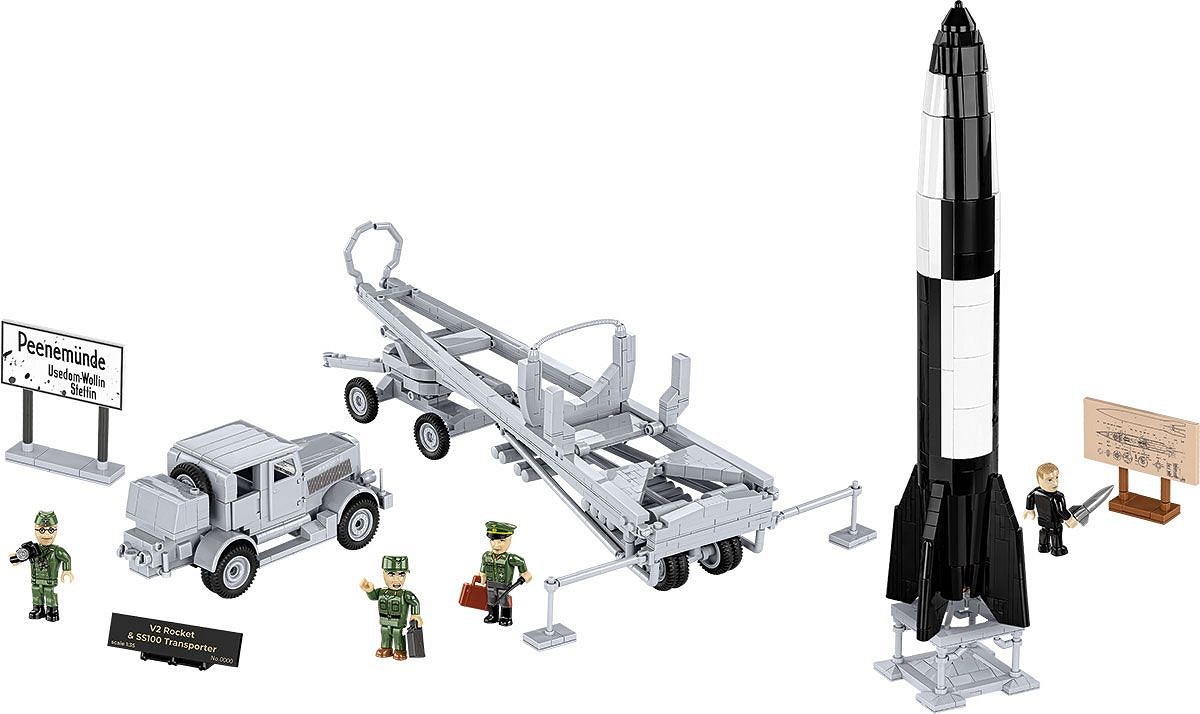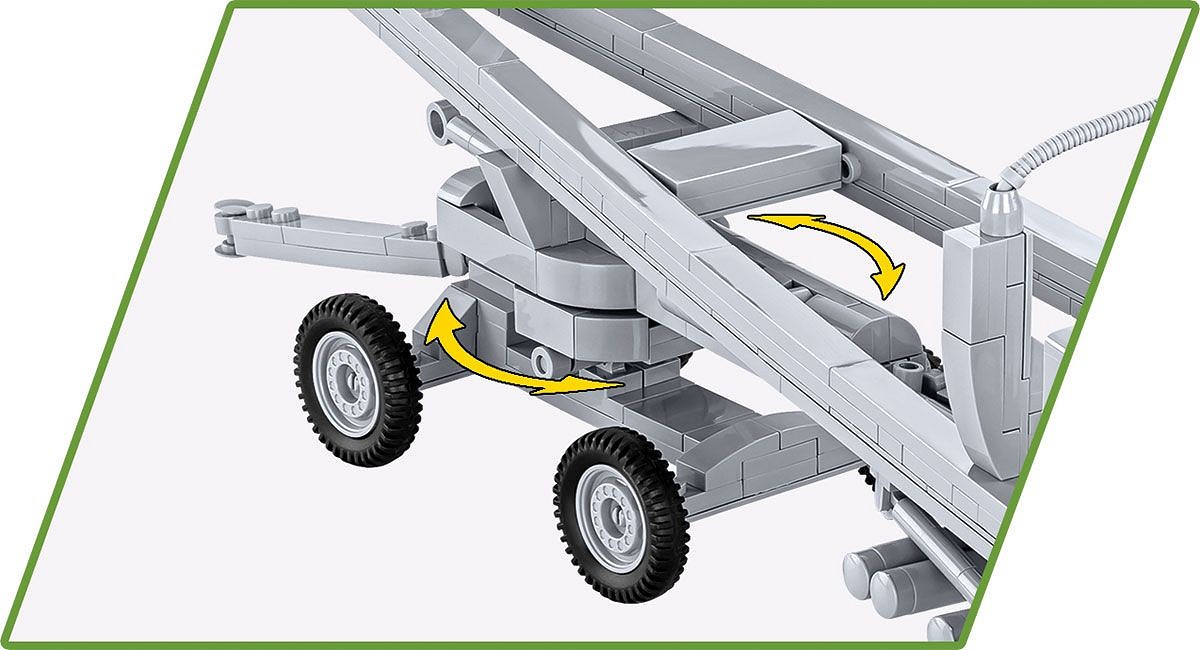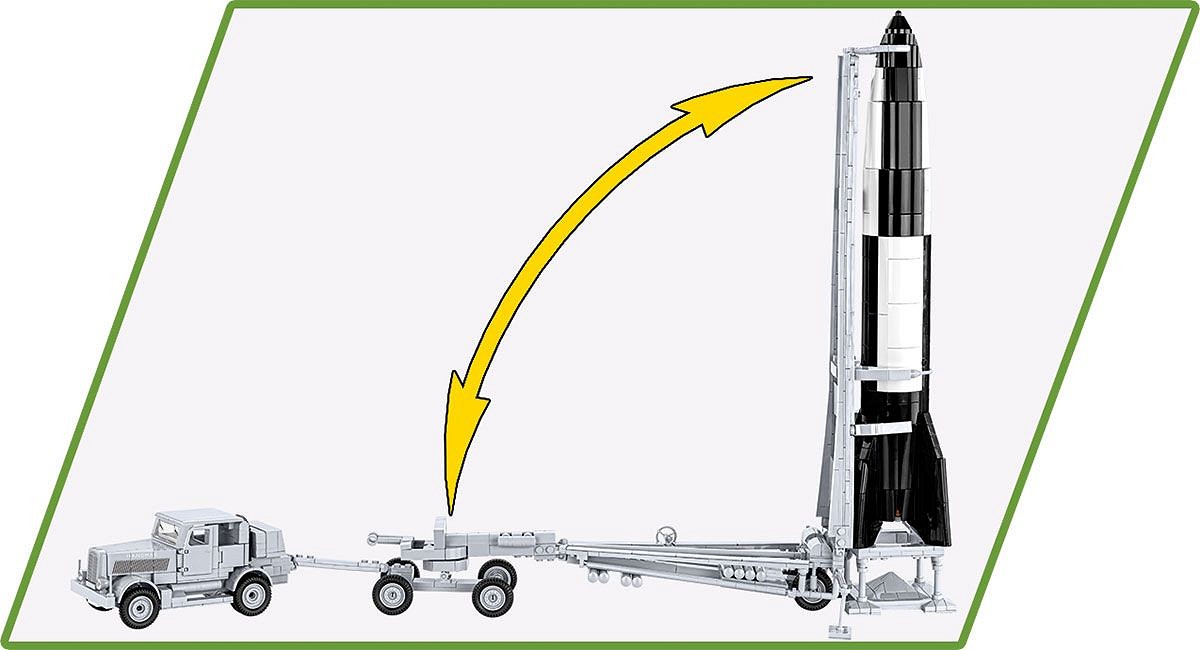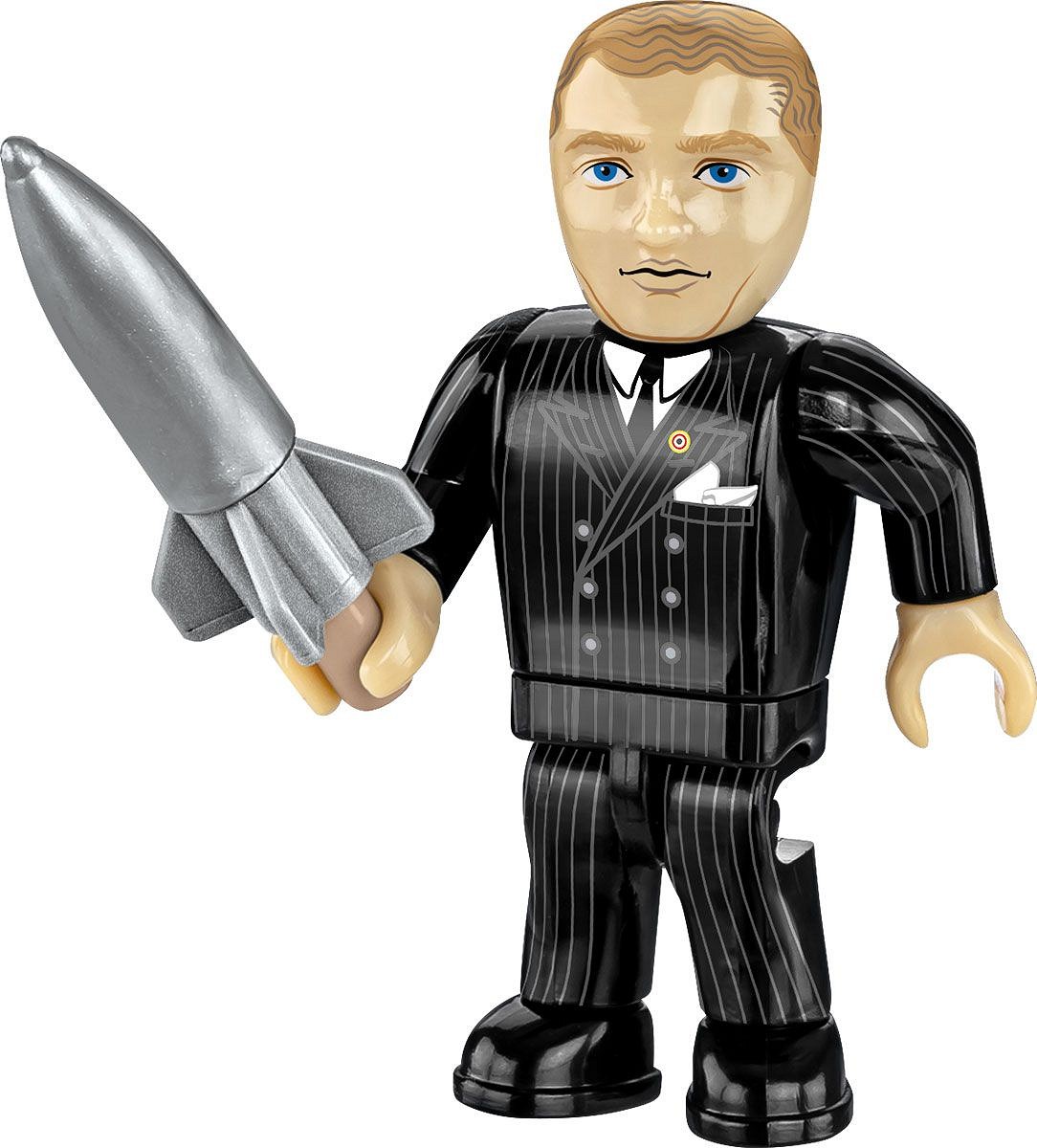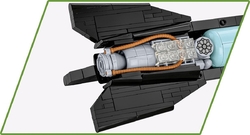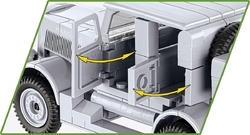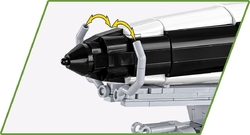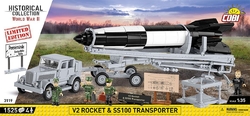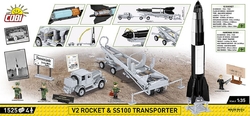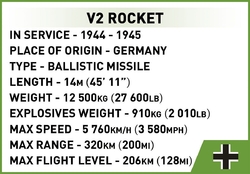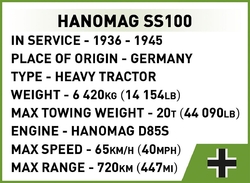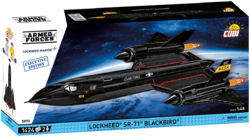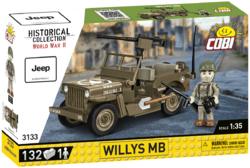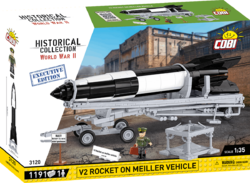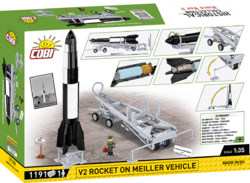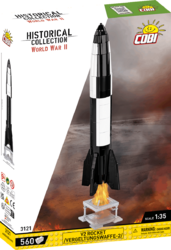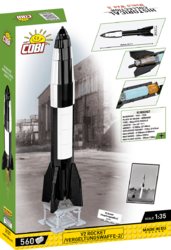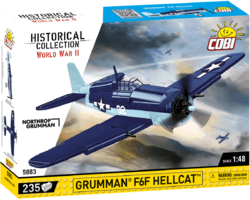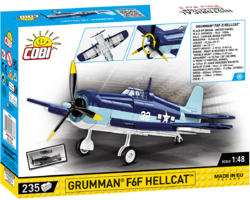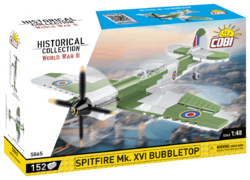Kit model of the German retaliatory weapon known as the V-2 rocket with a Hanomag SS-200 motor tractor and trailer. The assembled rocket can be stored in lockable holders on a tipping transport trailer. The shell of the missile can be removed to view the rocket motor. The Limited Edition package also includes a stand of the launch pad, a traffic sign of the city of Peenemünde where the secret development center was located, and a figure of Major General Walter Dornberger, a German soldier, officer and genius rocket engineer Werner Von Braun standing in front of the plans for his invention.
Show more
0 %
(0 Ranking)
| List Number: | COBI-3119 |
| EAN: | 5902251031190 |
| Warranty: | 24 months |
| Manufacturer: | COBI |
| Price excluding VAT: | 2 063,86 Kč |
Description
Parametres
Files and Links
Discussion
Reviews

You know that:
- The team of German General Walter Dornberger and genius rocket engineer Wernher vom Braun came up with the idea of a large ballistic missile in 1936, which was even before the development of the V-1 cruise missile was completed.
- The most important member of the team was W. Braun, who as a 16-year-old bought the book "Rocket into Space".
- The future rocket engineer read the book over and over, and we already know today that it influenced his entire life.
- His enthusiasm for rocket propulsion landed him briefly in prison even before the war, when in 1928 he launched a rocket-powered car of his own design.
- A noisy car with a trail of smoke detonated directly on a busy street has scared local residents. W. Braun was arrested for disturbing the peace. He spent several hours in jail before his father paid for the damages.
- W. Braun's career gained dizzying speed with Hitler's pursuit of a miracle weapon. The sick mind of this dictator longed for a weapon that could break Allied resistance when used against the civilian population.
- The first successful launch of the V-2 rocket took place on October 3, 1942. The missile reached an unprecedented height of 84.5 km at that time.
- The leader of the team, General Dornberg, declared that day: "This third day of October 1942 is the first day of a new era in transport, space travel".
- Before series production began, the team developed production drawings of each individual part. When the leader examined them, he declared that the world had never seen a more complex weapon. He was also very aware that none of the allies had any effective defense against the terrifying weapon.
- Mass production was given top priority. Prisoners imported from concentration camps worked in underground factories in inhuman and slave-like conditions.
- The American secret services knew about the development of the missile since the beginning of 1943, when the Office of Strategic Services of the US obtained from the Austrian resistance the drawings of the missile and the plans of the development center in Peenemünde.
- Based on this information, the Crossbow and Hydra withdrawal operations were prepared, which were supposed to weaken or stop the development and production of the V-2.
- At the end of World War II, and with the advance of the Allies into German territory, the race between the US, Britain and France on the one hand and the Soviet Union on the other to capture and acquire German ratet technology flared up.
- W. Braun was well aware of the fate that would await him if he was captured by the Soviets, so he allowed himself to be captured by the American army with more than a hundred rocket technicians and developers.
- The Americans took parts from the factories to complete about 80 missiles, while the Soviets were left with 20 pieces and damaged production equipment.
- Before the end of the war, Germany had to fire more than 3,000 V-2 missiles at the Allies. First to London, Antwerp and later to Liège. The last rocket was fired on March 27, 1945.
- W. Braun was transferred by the Americans as part of Operation Paperclip to Alabama, where he worked on further development after the end of World War II. Already in 1946, he reached the frontier of space with the improved V-2 rocket. A few months later, a V-2 rocket took the first photo of Earth from an altitude of 100 km, definitively confirming that our planet is round.
- During the following years, the brilliant German designer laid the foundations of the American space program.
- America's first ballistic missile, the PGM-11 Redstone, was built entirely on knowledge gained from research on V-2 rockets.
- Out of a total of 3,000 produced, many fragments and a few complete V-2 missiles survive around the world to this day. History enthusiasts can see one of them, for example, in the French Army Museum in Paris.
Technical parameters V-2:
- Dimensions: length 14 m, diameter 1.65 m, wingspan 3.53 m
- Weight 12,500 kg
- Warhead Amatol 60/40 weighing 1000 kg
- Propulsion unit liquid fuel rocket engine with a thrust of 27 kN (75% ethanol + 25% water and 4,910 kg of liquid oxygen)
- Range 320 km
- Maximum ballistic height 88 km
- Maximum speed 5,760 km/h
- Helmut Hölzer's PIGA guidance system accelerometer + gyroscope + analog computer
Technical parameters Hanomag SS-100 Gigant:
- Heavy tractor type
- Dimensions: length 5.04 m, width 2.46 m, height 2.4 m
- Weight 6,420 kg
- The maximum weight of the towed trailer is 20,000 kg
- Drive unit Hanomag D85S diesel engine with a power of 73 kW
- Range 720 km
- Maximum speed 65 km/h
Technical parameters of the Meiller-Kipper trailer:
- Dimensions: length 14.7 m, width 2.8 m, height 2.8 m
- Weight including rocket fuel carried 11,300 kg
- Maximum speed 15 km/h
- Launch Preparation Times: Missile Erection 20 minutes, Ethanol Filling 20 minutes, Oxygen Filling 10 minutes, Finishing Preparation for Launch 5 minutes
- Special equipment Volkswagen hydraulic drive, field telephone, snow chains
British Prime Minister W. Churchill on V-2:
"It is a weapon that brings destruction without warning and unexpectedly. That's what makes it so terrifying. It's only a matter of time before it is used on a larger scale and we must do everything we can to neutralise it before it's too late."
Assenbly instructions
| Scale | 1 : 35 |
|---|---|
| Number of pieces | 1525 pcs |
| Number of figurines | 4 pcs |
| Dimensions after assembly | 64 x 13 cm |
| Recommended age | 9+ |
| Contains luminous blocks | No |
| Material | Plastic |
| Collection | World War II Limited Edition |
| Compatible with other brand of kits | Yes |
Discussion is empty.
There is no review for product yet
Other categories
Related Items
Last viewed products
You might be interested












